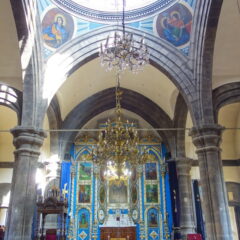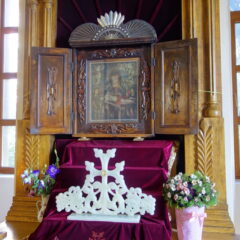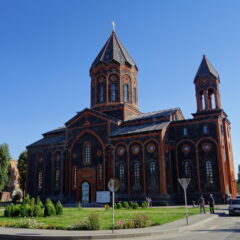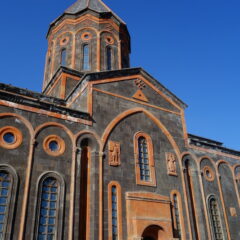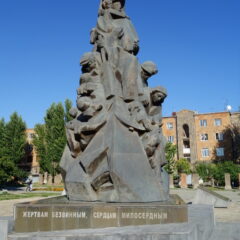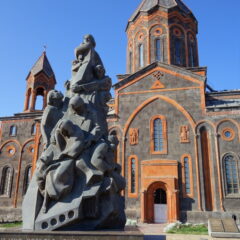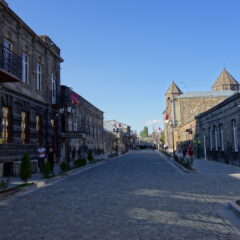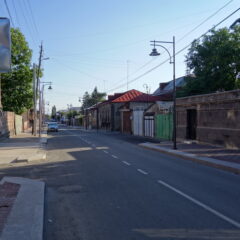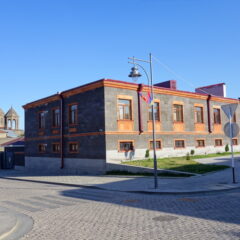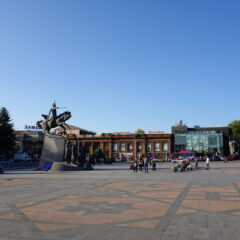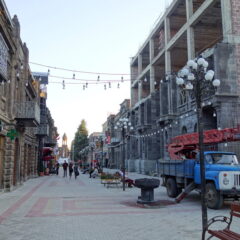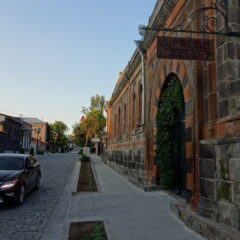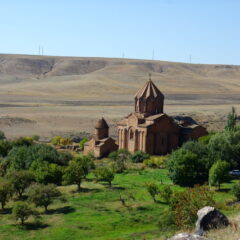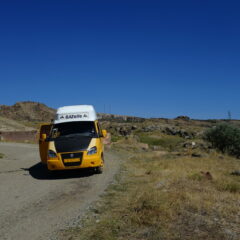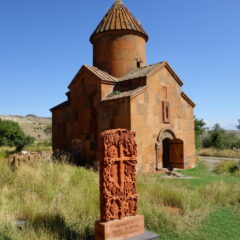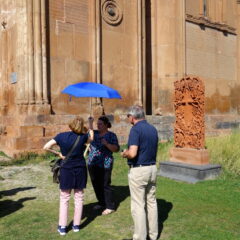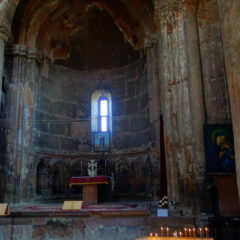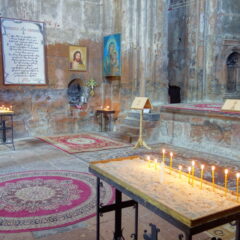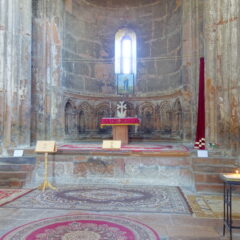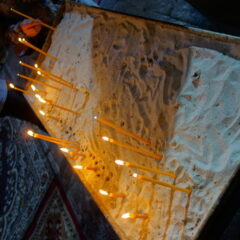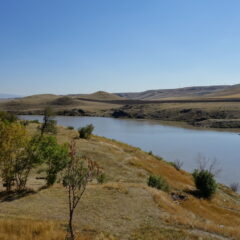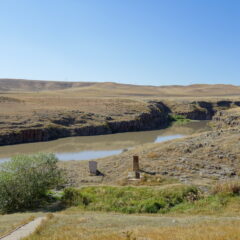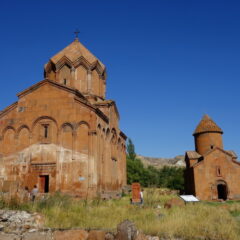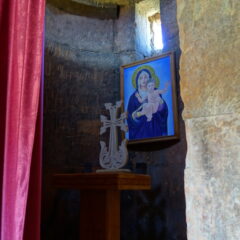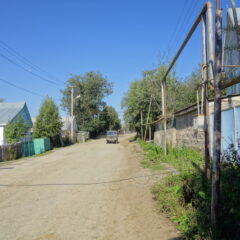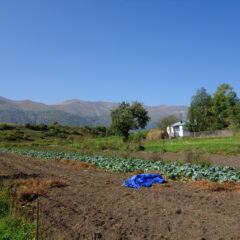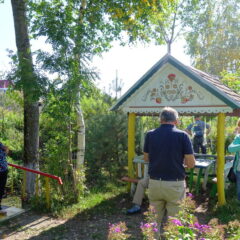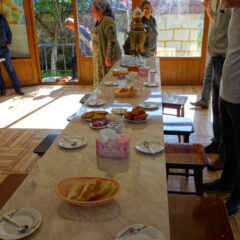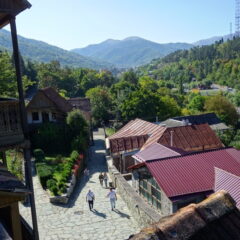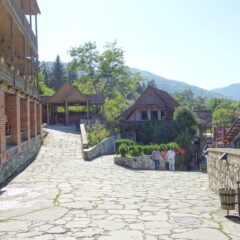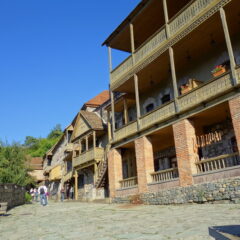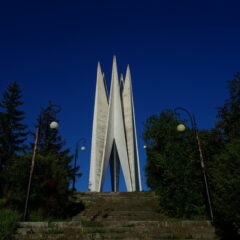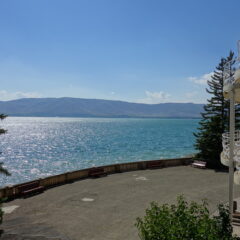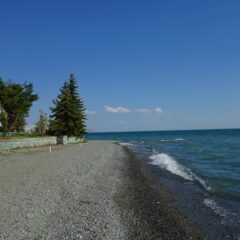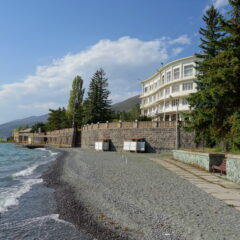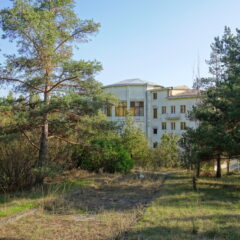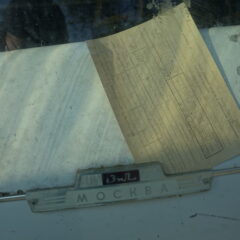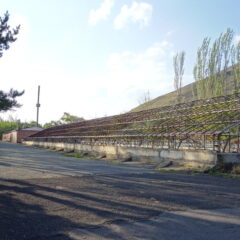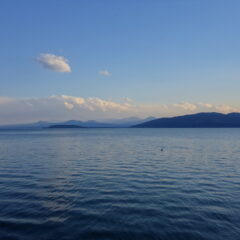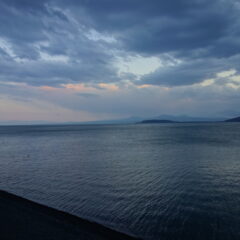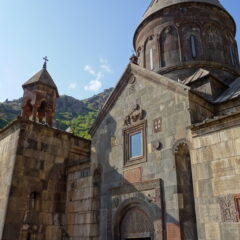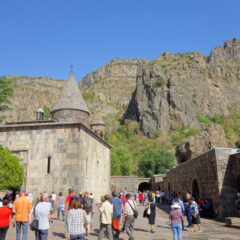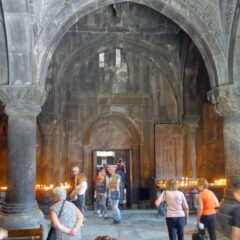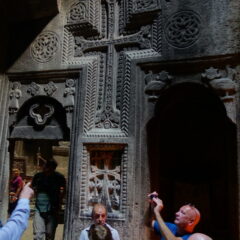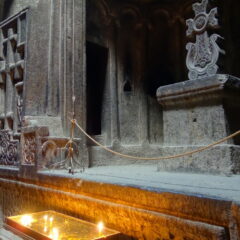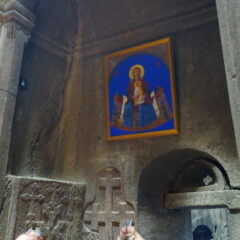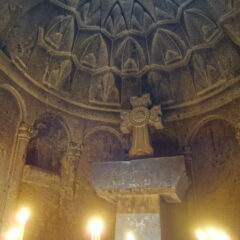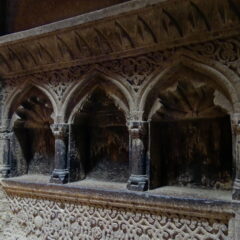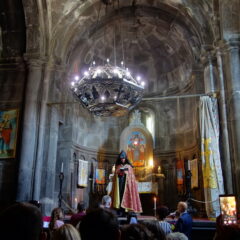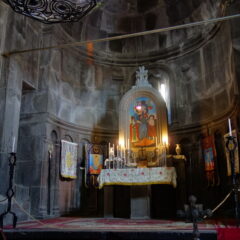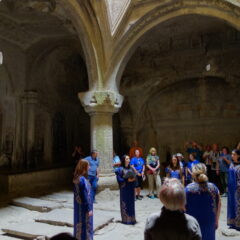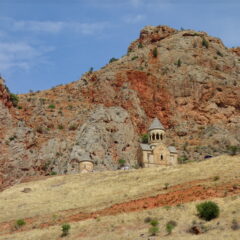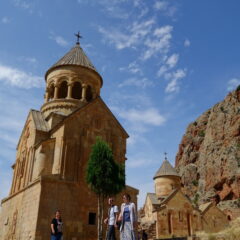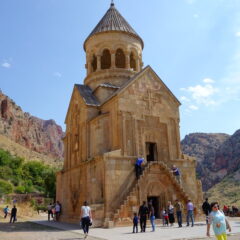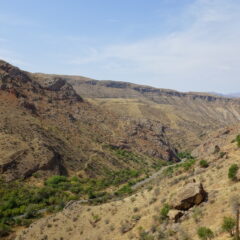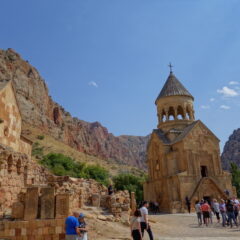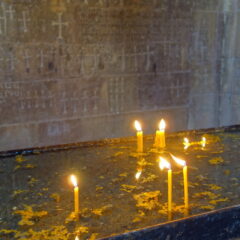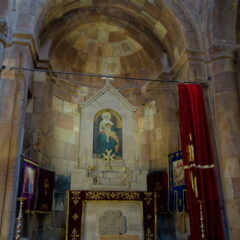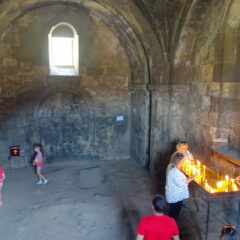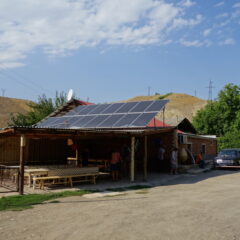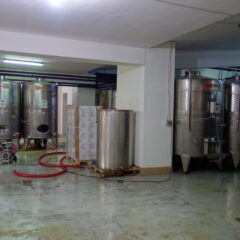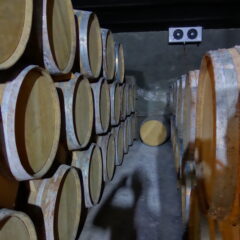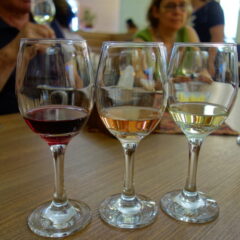Once we got back to Gyumri (Գյումրի) we had a quick guided tour of the main attractions around the city center – Yot Verk Church, Vartanants Square, the Church of the Holy Saviour and the Memorial to the Victims of the 1988 Earthquake.
Tag Archives: Armenia
Marmashen
After our arrival to Gyumri and a coffee, we were boarding a marshrutka (with a fairly impatient driver) for the trip to the Marmashen Monastery (Մարմարաշեն).
We kicked if of with a guided tour around the monastery (dating back to the tenth century) and its churches, before making the walk down to the Akhurian River – for a final sip of Ararat brandy.
Wait a minute Mr. Milkman
We had a drive of about 100km ahead of us this morning, to make it to Gyumri, our next destination – and the final one in Armenia.
En-route – to break up the drive – we had a stop in Fioletovo (Ֆիոլետովո), a village that has a sizable Molokan population.
Molokans are basically a Christian sect, with a tradition of dairy consumption during times of fasting. The name derives from the Russian word for milk: молоко́ (moloko). People here of of Russian descent and a minority group in Armenia.
The village certainly had a certain Russian feeling to it, which only got stronger, when we ended up a table in one of the guesthouses for some tea and a second breakfast. Tea was served – Russia-style – right from the samovar and blinis were on offer as well (next to a sort of potato doughnut, bread, homemade jam, cheese and sweets).
Dilijan – Impressions
We got back to Dilijan (Դիլիջան) in the afternoon, had a quick stop at the Tufenkian Old Dilijan Complex before continuing to our hotel.
I used the opportunity and had a walk around this small town, to get some more impressions – including a closer look at the (disappointing) monument, to celebrate teh Soviet 50th anniversary.
Hiking to Goshavank Monastery
Gallery
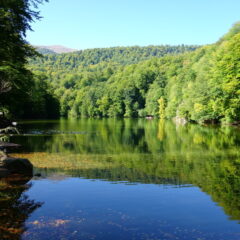
This gallery contains 19 photos.
This morning we were leaving Lake Sevan and the stone desert landscape, that we had been driving through since our arrival in Armenia, behind. A quick trip through a tunnel got us into a green valley, often dubbed as Armenia’s … Continue reading
Beach Time – Soviet-style
We continued along the shores of Lake Sevan. With two churches and a cemetery behind us – and after a quick lunch – we were now heading for a free afternoon in our holiday resort right at the beach of the lake.
Things were strange, when we arrived at the hotel … the whole complex, including the park felt a bit like a trip back to Soviet times – – also there was no one at the hotel, to actually welcome us or hand out room keys. After some minutes the receptionist did show up and we made it into the hotel, received our room keys and – after a bit of debate – decided, to have dinner in the restaurant of the hotel.
While the rooms were actually quiet suitable (including balconies overlooking the lake), there was still a sort of eerie feeling around the place – – it felt like a haunted house, when someone started playing the (somewhat out-of-tune) piano in the lobby …
Things were similar in the park around the hotel … clearly this place had seen better and more busy days in the past. Some parts here were well maintained – others however had a slight feeling of decay, giving them a somewhat morbid atmosphere. It reminded me a bit of Pripjat, as those parts were similarly abandoned with no one looking back – just a lower levels of radiation. The old, long given up, shop surely is good example here – its main exhibit was an old MOCKBA fridge from 1968 (complete with its USSR inventory card).
Leaving the odd feelings aside, I had a great time here … the wine was good, dinner and breakfast delicious and the staff were serving us well – the Soviet side-flavor was just a nice add-on.
Monasteries & a Cemetery
Gallery
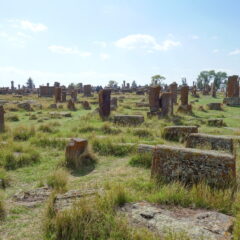
This gallery contains 16 photos.
We were leaving Yerevan behind today, with the next destination being the area around Lake Sevan. A drive of just less than 100km got us to Noratus, where – after a toilet break and an impromptu (temporary) swap of spindles … Continue reading
Geghard Monastery
As mentioned earlier – so is no such thing, as a day without a church or monastery for tourist in Armenia … and as the morning had only covered a temple and the ruins of a church, we really had to catch up now … and the choice for the afternoon surely did not disappoint.
It took us less than 15 minutes, to make it from our lunch place to Geghard Monastery (Գեղարդի վանք).
The monastery goes back to the forth century (with the main church built in the early 13th century) and – as before – located in a canyon.
The monastery originally got started in a cave, however had then been destroyed in the 9th century, when an Arabian caliph was coming through; earthquakes did not help too much either. It was only in the 13th century, when a new construction was started – the main church dates back to 1215. Over time the church was extended, a gavit (kind of anteroom in front of the main church room) was added. Some of the new structures were actually even carved out of mountainside, including a number of churches, as well as part of the gavit of the main church.
To me Geghard was indeed the highlight, when it comes to monasteries on this trip – the atmosphere here was just special – especially in the structures hewn out of the rock. I guess, the fact, that we (nearly) did run into a service in the main church, as well as the concert in the Upper Jhamatun did just add to that experience.
Symphony of the Stones
Gallery
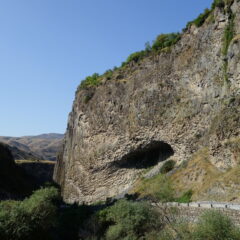
This gallery contains 12 photos.
This morning we enjoyed a short break from churches and monasteries. We left Yerevan and made the trip to Garni (a good half hour of driving), where we were heading off for a short hike. The description in the itinerary … Continue reading
Noravank & Areni Wine
A drive of about 1.5 hours (a good 80km) got us to the second stop for the days – Noravank Monastery (Նորավանք) – the “new monastery”.
Noravank – similar to Khor Virap – is sitting in a stunning location on a sort of cliff in the middle of a tight canyon – and features good views of the canyon.
The monastery was founded back in 1205 and main highlights are its two big churches, St. Astvatzatzin and St. Karapet.
St. Astvatzatzin (Holy Mother of God) was completed in the mid 14th century; a renovation of the roof structure happened in the late 1990s. St. Karapet is older, dating back to the early 13th century (though got destroyed twice over the centuries – each time followed by reconstruction).
We had a tour around the churches, along with – again – details and background. Eventually we made it back to the bus, as two more secular highlights were still ahead of us.
We had a quick drive over to Areni, where we had a late lunch with a local family. Food was good and plenty – and after we had finished the meal, we were invited, to have a vodka. Imagine our faces, when the vodka turned out to be a (fairly good) grappa.
With the bellies full, another short drive got us to the Areni wine factory. After a guided tour through the winery (no walking behind the bottling machine though), we were once more led into a tasting room and got to try the wines. Well – the whites did not convince me, the reds though were quiet nice.
From the winery it was back to Yerevan for a free evening. Some of us decided, to give Armenia’s national food chain Karas a try. So we walked over to the next store, took a table and – after we had worked out the language difficulties – were positively surprised by the choice, quality and the price. The concept actually reminded me of the one La Placinte is employing in Moldova.
